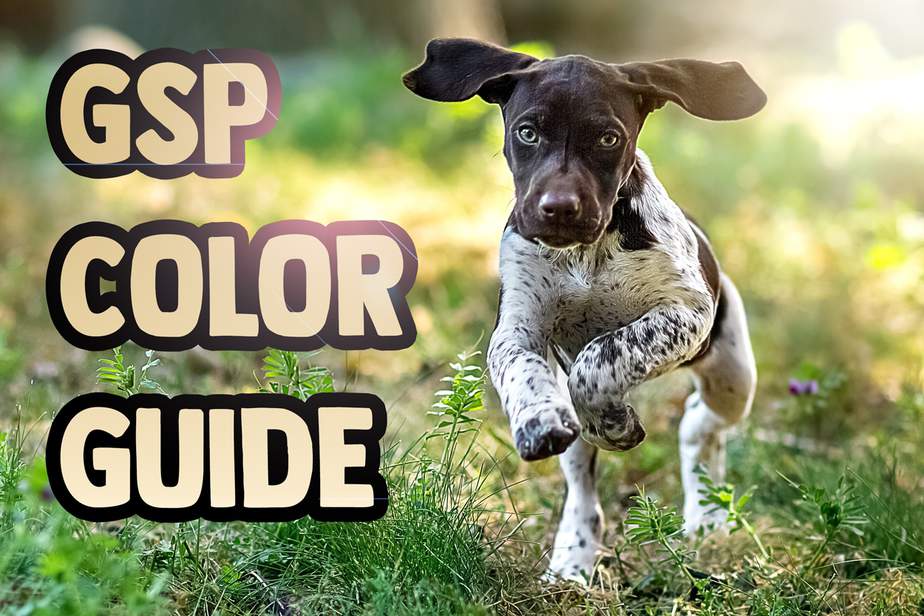Do you have a GSP and you’re wondering about their coloring? Maybe they’re changing color, or you’re wondering how much they’ll change. Not to worry, we are here to answer your questions on everything to do with the colors of German Shorthaired Pointers.
The Color Changes of a German Shorthaired Pointer
German Shorthaired Pointers are born white with liver patches. As they mature, the white coat will fill in with various shades of liver or liver roan ticking. Various shades of ticking will become apparent in the litter from around 5 weeks old. Most dogs continue getting darker with age.
By the time they are 8 weeks old, you should have a good idea of what coloring your GSP puppy will have, and as time goes on, their freckles will darken more.
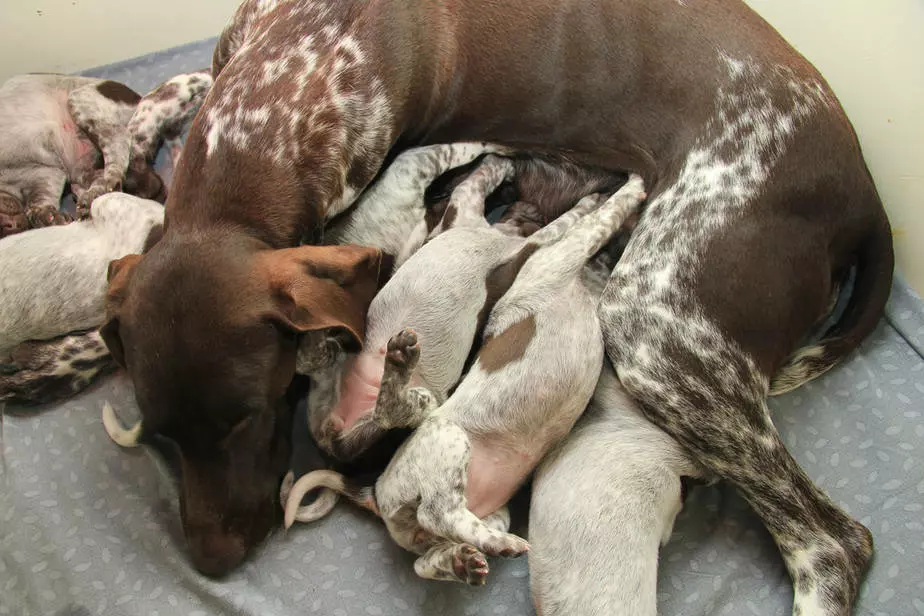
German Shorthaired Pointer Colors
German Shorthaired Pointers come in a variety of white and liver color patterns. These patterns include:
- Solid liver
- Liver and white
- Liver and white patched
- Liver and white patched and ticked
- Liver and white ticked
- Liver Roan
Any German Shorthaired Pointer that has the following colors does not adhere to the breed standard:
- Solid white
- Any black
- Any red
- Any orange
- Any lemon
- Any tan
Here are all the colors of the GSP:
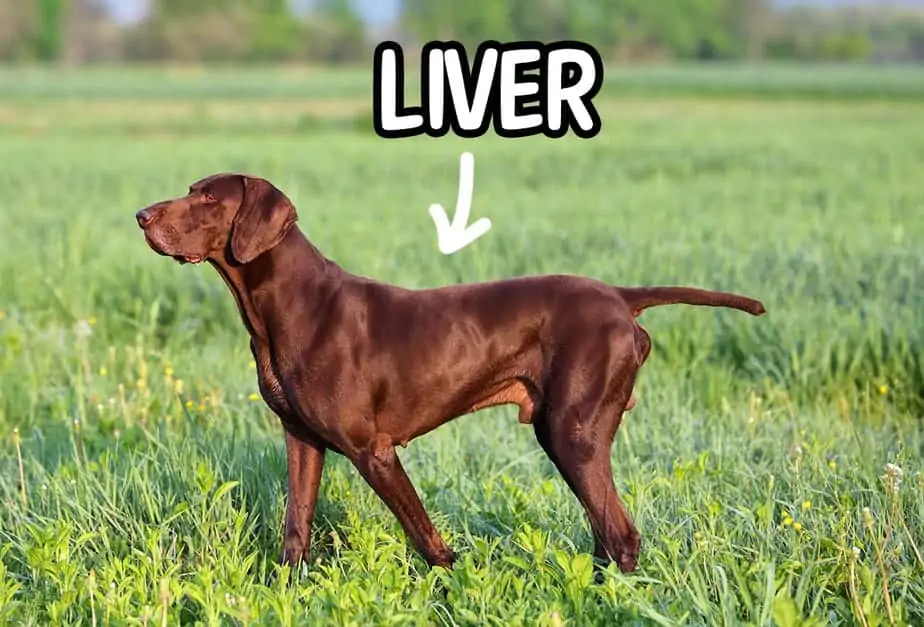
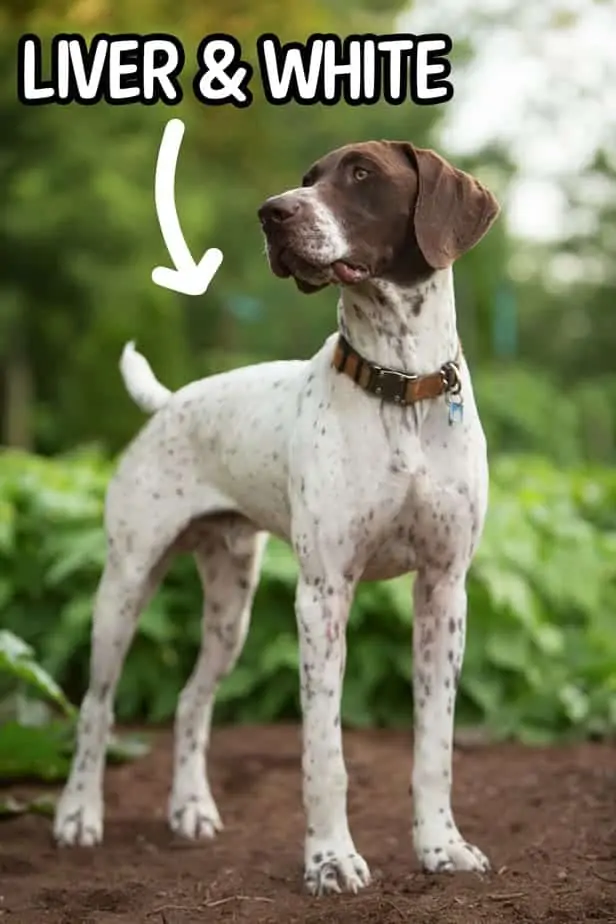

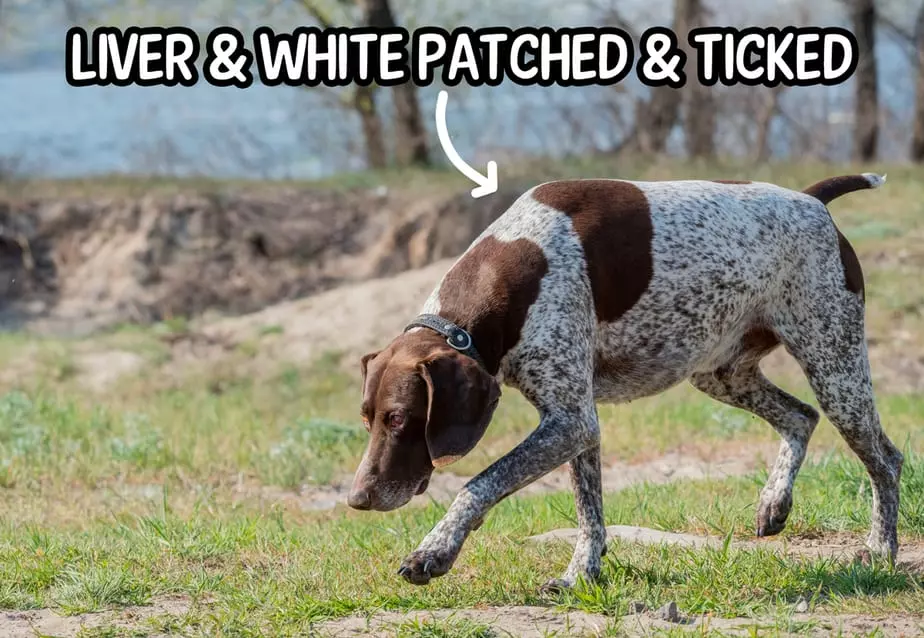
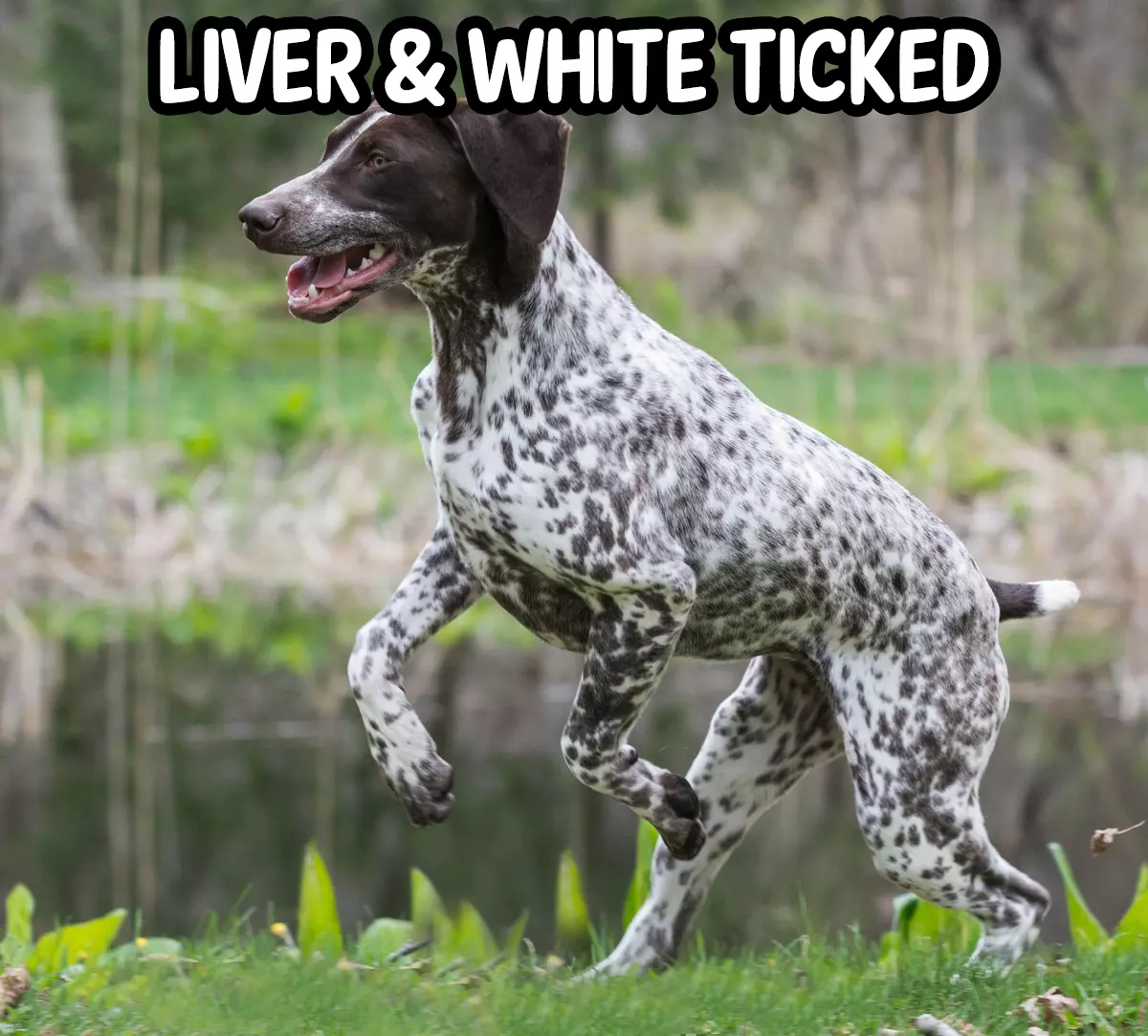
German Shorthaired Pointer Liver Roan Coat Color
Liver roan is not considered a color when it comes to the German Shorthaired Pointer as it is in other breeds. Rather, liver roan is considered to be a distribution of white and liver hairs in an alternating stitch by stitch pattern. The liver roan coloration will become more apparent as the dog ages.
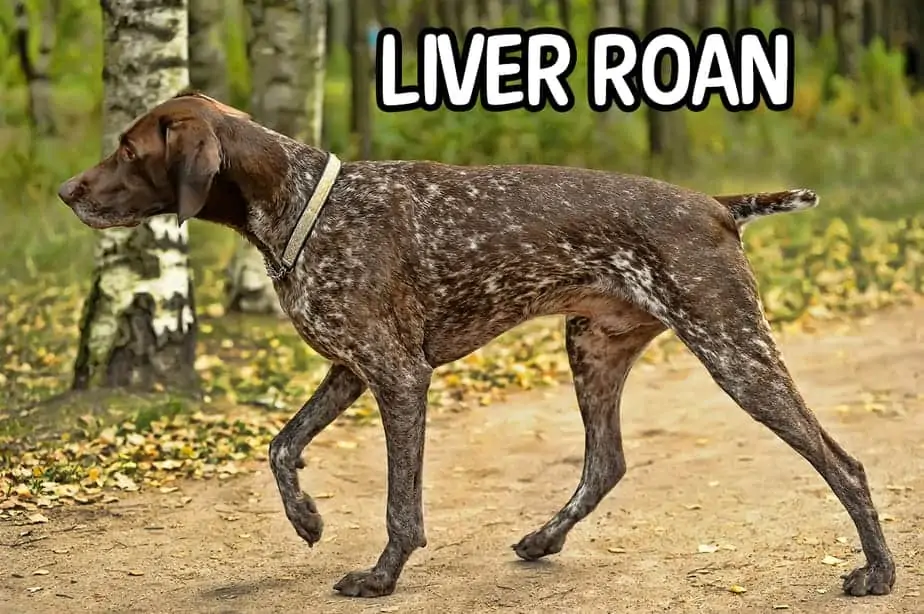
Can German Shorthaired Pointers be black?
German Shorthaired Pointers carry the recessive genes that create various shades of liver and white. Dogs that contain any black are not recognized by breeding organizations like the AKC to be a GSP.
It’s not impossible to find a black German Shorthaired Pointer, but the dog would not be recognized as part of the breed since they are most likely crossed with another type of dog that carries the gene for black.
*EDIT – I’ve been informed that the AKC now recognizes the black and white GSP. However, they cannot be entered into an American GSP dog show. In other countries, they can be.
You might also have a black GSP that’s changing color, so be sure to read that post here.
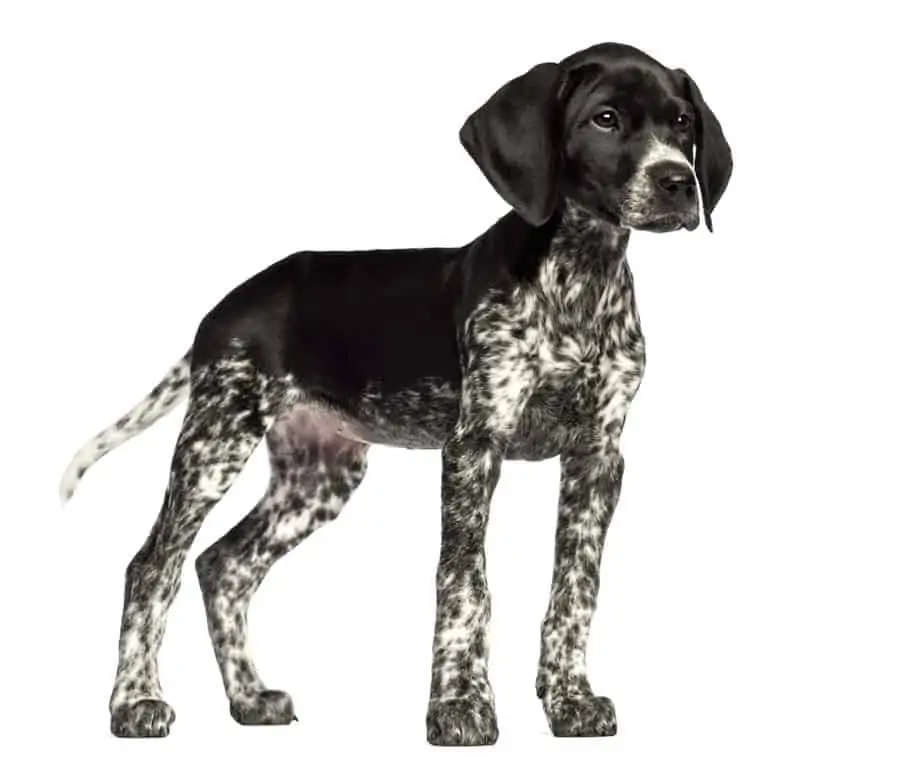
When do GSP’s get their spots?
German Shorthaired Pointer puppies usually develop their ticking/spots in the first 5 weeks after birth. The GSP will most likely keep changing, developing more and more ticking as it grows older. You might start off with a nearly pure white and liver dog and end up with a liver roan 8 years later.
German Shorthaired Pointers in Other Colors
If a German Shorthaired Pointer is bred with a true black dog, you will inevitably get black puppies. If those puppies are then bred back into the breed of German Shorthaired Pointers, until they breed true to the breed, then you will have successfully introduced the black gene to the breed.
Breeding true to the breed means that no matter how many times there are offspring of offspring, the puppies will always have the right colors, conformation, and temperament that is known to the German Shorthaired Pointer breed standard.
The above is with the exception of black being added to the mix. If bred enough and no variations besides the black color is present, then the black pointer might be eventually accepted into the breed standards.
Would you like to read our post, Petco vs PetSmart: Which is Better
The Origin of German Shorthaired Pointer Colors
German shorthaired pointers are known to be the color liver and white with liver-colored footpads and a liver nose. To get this color, the dog will have only one type of the 4 possible genes combinations on the B locus genotype.
The two possible genes that determine if a dog is black or liver are known as B or b where B is the dominant gene for black and b is the recessive gene for brown/ liver/ red or chocolate.
Each gene has to have another gene that it is partnered with, therefore, to get a liver dog, you will have to have one b-gene from the father and one b-gene from the mother.
The dog will end up with a genotype of bb on the B locus guaranteeing the color liver on the nose, footpads and in the coat.
There are also other genes that play a role in coat color and that is where the white comes from.
There are 4 types of combinations that can play a role in the B locus and thus the coat color of a dog. These combinations are BB which guarantees that this dog is black and the offspring of such a dog will be black regardless of the other parents’ genetics.
Then you get Bb which has a 50% chance of the offspring being either black or brown depending on the other parents B combination and which gene is inherited.
And lastly there is bb which always end with a liver-colored dog, unless the other parent carries the B-gene for black.
All of this simply means that if you mate a true liver dog with another true liver dog, one that has a liver nose and footpads and coat, you are guaranteed to get liver-colored offspring every time because both parents carry the bb gene combination.
Here is a diagram of the 4 possible gene combinations to make it a bit easier:
| BB- True black | Bb |
| Bb | bb- True liver |
Remember, the puppy inherits one gene from each parent, therefore the puppy will get one B-gene from each parent. This means that if the first parent has a gene combination of BB and the second has a combination of Bb, the puppies are guaranteed to be black, because the puppy will automatically inherit a B-gene no matter what.
If the second parent also has a BB genotype, then they can never have liver puppies and their offspring will also not be able to ever have liver puppies.
If the first parent has a combination of Bb and the second parent is still Bb then the puppy has a 75% chance of being black and a 25% chance of being liver. This means that the parents can have offspring with all 4 combinations since both have a B-gene and a b-gene.
This means that 25% of their puppies might always have black puppies no matter what because of inheriting the BB-gene combination. The other 75% have the potential for liver puppies, depending on the dog they are mated with, due to either inheriting the Bb-gene combination or the bb-gene combination. The 25% that inherit the bb-gene combination will always have liver puppies if mated with another true liver dog.
If parent one has a Bb gene combination and parent 2 has a bb gene combination, there is a 50% chance to get either a black or a true liver puppy.
When mating a true liver dog (bb gene combination) with another true liver dog then the only color you can get is liver because 100% of the puppies will inherit the bb gene combination.
The German Shorthaired Pointers are bred to have a bb-gene combination. This gives them their liver coloration.
That is also the reason why black and other colors are not accepted by studbooks. If black or any other color is present, it is most likely not a purebred German Shorthaired Pointer, and thus will be disqualified from studbooks and other breed registries such as the AKC.
We used these sites for our research on the effects of genes on coloring:
https://www.pawprintgenetics.com/products/tests/details/162/?breed=120
https://www.pawprintgenetics.com/products/panels/details/139/?breed=120
German Shorthaired Pointer Puppy Breed Information
| Category | Answer |
|---|---|
| Weight | 44-71 lb (20-32 kg) |
| Weight | 44-71 lb (20-32 kg) |
| Lifespan | 10-14 years |
| Origin | Germany |
| Exercise Requirement | More than 2 hours per day |
| Grooming Requirement | Once a week |
| Ease of Training | Easy to train |
| Coat Color | White and liver in varying shades and patterns |
What should I expect from my German Shorthaired Puppy?
German shorthaired pointer puppies are friendly and intelligent. They are eager to please which makes training them a lot easier. If you prefer peace and quiet, then this breed is not for you. They are bold, boisterous and very protective of their families. You can expect minimal grooming when it comes to this breed.
Have you seen our other posts on GSP’s?

